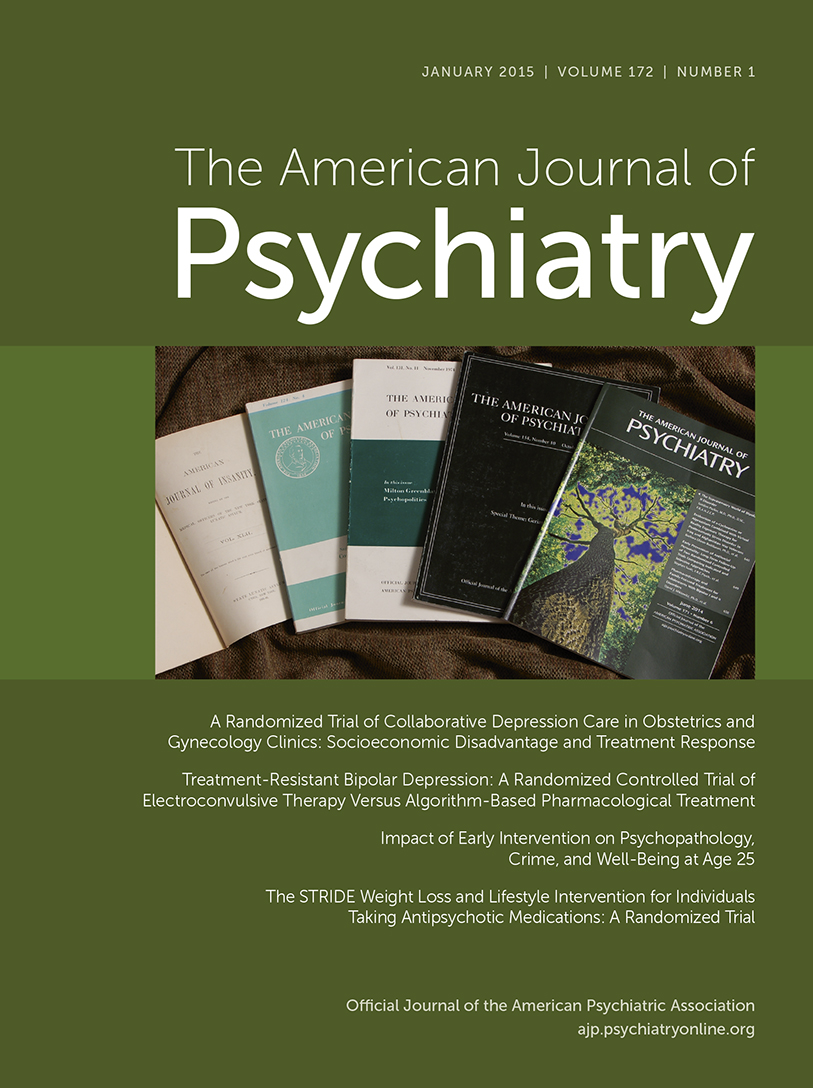Reversal of Non-Suppression of Cortisol Levels in a Patient With Refractory Depression Receiving Ketamine
“Mr. J,” a 46-year-old man with treatment-resistant depression, was hospitalized following a serious suicide attempt. He had failed trials of selective serotonin reuptake inhibitors, tricyclic antidepressants, antipsychotics, lithium, lamotrigine, riluzole, and ECT. In preparation for a trial of tranylcypromine, we discontinued the patient’s current medications and initiated intravenous ketamine infusions at 0.5 mg/kg over the course of 40 minutes each. Prior to the patient’s first ketamine infusion, his DST showed nonsuppression, with an 8:00 a.m. cortisol level of 1.7 mcg/ml and a 4:00 p.m. cortisol level of 7.4mcg/ml. After three alternate-day infusions of ketamine, his mood improved dramatically, with a 50% reduction in his Hamilton Depression Rating Scale score. Repeat DST showed suppression with 8:00 a.m. and 4:00 p.m. cortisol levels of 1.1 and 1.0, respectively (normalized). One week after discontinuation of ketamine, the patient’s symptoms returned. Prior to starting the monoamine oxidase inhibitor, and upon re-emergence of symptoms, his cortisol levels were once again nonsuppressed, with levels of 7.7 mcg/ml and 14.5 mcg/ml, respectively.
References
Information & Authors
Information
Published In
History
Authors
Funding Information
Metrics & Citations
Metrics
Citations
Export Citations
If you have the appropriate software installed, you can download article citation data to the citation manager of your choice. Simply select your manager software from the list below and click Download.
For more information or tips please see 'Downloading to a citation manager' in the Help menu.
View Options
View options
PDF/EPUB
View PDF/EPUBLogin options
Already a subscriber? Access your subscription through your login credentials or your institution for full access to this article.
Personal login Institutional Login Open Athens loginNot a subscriber?
PsychiatryOnline subscription options offer access to the DSM-5-TR® library, books, journals, CME, and patient resources. This all-in-one virtual library provides psychiatrists and mental health professionals with key resources for diagnosis, treatment, research, and professional development.
Need more help? PsychiatryOnline Customer Service may be reached by emailing [email protected] or by calling 800-368-5777 (in the U.S.) or 703-907-7322 (outside the U.S.).

